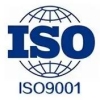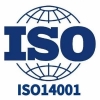Fundamental to the success of drones is sensor technology

TDK is a leading manufacturer of unmanned aircraft IMUs. The combination of the IMU three-axis acceleration sensor and the three-axis mobile gyroscope provides the data and information needed to maintain smooth navigation and can be harmonized with the UAV.
In the last few years, drones have quickly entered one major use after another, such as agriculture, animal husbandry, real estate and cinematography, and even become one of the indispensable specialized tools. Despite the obvious results, the drone still has unlimited potential to discover, as it is suitable for basically all kinds of uses, including delivery, inspection, rescue, monitoring and mapping.
The prerequisite for the success of the UAV is sensing technology, which must rely on different types of sensors to achieve two key objectives. The key is to complete your own functions, especially navigation and navigation bars; Secondly, functions, such as visual surveillance cameras, motion detectors for cognitive theme activities, thermal sensors to detect temperature, etc. TDK can deliver a complete suite of applicable sensors to all categories of UAVs, ranging from consumer/quasi-professional models to industrial models. Today, the article explains this major product in detail.
Using sensors in unmanned aircraft
Drones are already highly reliable for navigation. Why raise it further? One of the typical applications for drones is primarily to check the integrity of structures in places that people can't get to, such as overpasses, remote pipelines or cell towers. The level of detection, such as the ability to detect tiny cracks or release radio-frequency connectors, depends on maintaining good time-rest while sailing.
In addition, many new applications make higher requirements for the safety of unmanned aircraft. For example, drones used for delivery cannot be lost or ineffective. The same rules apply when drones are used in rooms (such as monitoring electrical wiring or plumbing in automated factories) or places where some people are often present, such as warehouses. Precision, accuracy and stability will become more serious priorities.
With the continuous improvement of the safety factor of UAV performance, its main uses will be more extensive and the application will be stronger. However, as the total number of sensor integrations increases, the types increase, and the characteristics increase, the capabilities and safety of unmanned aircraft will become more powerful. To achieve the above requirements, the following sensor portfolio strategies are used by TDK for UAV technology:
IMU(Inertial Measurement Unit)
TDK is a leading manufacturer of unmanned aircraft IMUs. The combination of the IMU three-axis acceleration sensor and the three-axis mobile gyroscope provides the data and information needed to maintain smooth navigation and can be harmonized with the UAV. Integration of other GPS systems is used in the trajectory measurement navigation bar. Because this function is so important, an unmanned aircraft can usually use several. IMU and achieve higher accuracy. Key factors include: IMUs can be used for reservation, in other website navigation, unmanned aircraft is important (e.g. GPS) when blocked, dead or completely ineffective, full play. Plus, there's no way to apply it. GPS similar service applications, IMU is also essential.
As TDK evolves with The Times, we need to take performance stability to a new level based on industrial sensor arrays and control modules, and constantly improve our consumption level. IMU product line. The new product series mainly promotes intelligent robots, agriculture and animal husbandry, and high-grade and high-precision applications. In addition, we have developed and designed unique technology that can provide stable images for intelligent machines, which can be easily used on drones.
Stable optical image (OIS) sensor
Electronic device stabilized Images (EIS) use IMU data information to compensate for motion in the phone. This method captures image information and then compensates frame loss caused by camera movement through system software technology. Digital image stabilization (OIS) compensates for motion in hardware configurations. This method compensates for the fitness exercise by comparing the exercise the camera experiences and then making a physical intervention to the camera lens. Naturally, this technology can also be combined.
OIS/EIS is another function that can be realized according to different sensors, and can achieve bi-directional objectives. First of all, unmanned aircraft are selected based on the fundamentals of visual positioning and anti-skid, OIS/EIS which can be used as another suitable input for navigational reliability. Drones, which can also be equipped with L-band surveillance cameras for high-definition aerial still data pictures and videos, are finally gaining traction. IMU and OIS/EIS mobile phone software that turns all drones into high-resolution cameras.
Air pressure sensor
The TDK level sensor can accurately measure pressure changes. Liquid level sensors have been used by commercial airlines to help determine how high a plane is flying. Drones, of course, can be used for the same purpose. When used together, the IMUs, a combination of liquid level sensors, can help control the altitude of the UAV, thus improving the reliability of navigation.
As drones become more widely used, their flight controls are becoming more stringent. Many regulators, including the FAA, set altitude limits for aircraft. Therefore, the high precision operation of UAV flight is an important research.
MEMS microphone
TDK's superior MEMS microphones feature a wide dynamic range and low power, allowing loud drones to capture clear audio data. Powerful microphone arrays can help capture audio characteristics, providing a reliable solution. For example, aircraft propellers can reduce noise and noise (ANC) waiting services can help unmanned aircraft better capture high-definition audio/short video from surveillance cameras.
According to the microphone, the self-inspection function of the drone is also expected to be completed. For example, motor damage often has special sound characteristics. As drones become more sophisticated, they become more expensive. Therefore, it is important to identify and correct problems in advance when an exception occurs in the system.
In addition, the integration of microphones opens up the possibility of intelligent speech. As TDK continues to refine MEMS microphones and ANC technology, drone manufacturers are working to implement more user-friendly page options such as voice commands.
Ultrasonic TOF sensor
TDK Ultrasonic Time of Flight (ToF) accurately detects objects within a range of 10 cm to 5 m based on the PMUT(piezoelectric micromechanical ultrasonic transducer) of sensor MEMS. A drone equipped with ToF sensors can detect obstacles ahead and avoid detours. At the same time, anti-skid is also important, not only to avoid damage to the drone by impact, but also to keep people and things around us safe.
The use of downward detection ToF sensors can achieve this overall goal, while also promoting accuracy and fully automated landing of drones. TDK's ultrasonic ToF technology also accurately detects the characteristics of the surface on which it is about to land, thereby preventing unmanned aircraft from landing. Common oolong tea conundrums such as "landing" to the surface of the water are also important.
Temperature sensor
The TDK temperature sensor can control the temperature of the motor windings of the drone. By accurately measuring the temperature in operation and checking the continuous high temperature potential difference, thermal management can be improved, thus ensuring the safe operation of the UAV and extending the service life of the rechargeable battery and motor. Temperature sensor can also be used as the traditional excess temperature control, according to the output power temperature calculation, to ensure that the UAV complete controllable operation control, reduce. G541 series products are characterized by small specifications, fast response time and high operating temperature (up to 260℃).
Future development trend
TDK is focused on continuous innovation in sensing technology, for example, we are looking for applications of magnetometers in unmanned aerial vehicles. Active sensor fusion has already been used successfully for precise positioning in smartphones, because magnetometers are so good at precise positioning, but this refined technology could be quickly applied to drones.
In addition, the magnetometer can also accurately and accurately measure the speed of the motor. Why is it useful? The main reason is that drones usually reach the navigation bar by adjusting the relative motion between their motor rotors. One way to improve drone flight accuracy is to operate drone motors more accurately. At this point, it is necessary to check the power of the motor more accurately.
Naturally, the above explanation is just one example of sensor applications. Drones are getting more and more robust in terms of their basic features and the problems they can solve, and TDK is all based on our own sensing technology. In addition, we can also apply a combination strategy to UAV sensor products, including a wide range of microprocessors and embedded motor drivers, as well as other unique app applications.
Die Produkte, an denen Sie interessiert sein könnten
 |
TPCM-2.4-5 | CMC 2.41MH 5A 2LN TH | 6894 More on Order |
 |
AA53002-015 | XFRMR TOROIDAL 300VA CHAS MOUNT | 8352 More on Order |
 |
62043-P2S02 | XFRMR TOROIDAL 10VA CHAS MOUNT | 5472 More on Order |
 |
62021-P2S02 | XFRMR TOROIDAL 5VA CHAS MOUNT | 5058 More on Order |
 |
62005-P2S02 | XFRMR TOROIDAL 1.6VA CHAS MOUNT | 7668 More on Order |
 |
62075-P2S02 | XFRMR TOROIDAL 35VA CHAS MOUNT | 7308 More on Order |
 |
62073-P2S02 | XFRMR TOROIDAL 35VA CHAS MOUNT | 5292 More on Order |
 |
70074K | XFRMR TOROIDAL 35VA THRU HOLE | 6840 More on Order |
 |
70072K | XFRMR TOROIDAL 35VA THRU HOLE | 5634 More on Order |
 |
70031K | XFRMR TOROIDAL 7VA THRU HOLE | 8658 More on Order |
 |
70015K | XFRMR TOROIDAL 3.2VA THRU HOLE | 7578 More on Order |
 |
70014K | XFRMR TOROIDAL 3.2VA THRU HOLE | 5562 More on Order |
 |
70002K | XFRMR TOROIDAL 1.6VA THRU HOLE | 5040 More on Order |
 |
62015-P2S02 | XFRMR TOROIDAL 3.2VA CHAS MOUNT | 3780 More on Order |
 |
62082-P2S02 | XFRMR TOROIDAL 50VA CHAS MOUNT | 4986 More on Order |
 |
62033-P2S02 | XFRMR TOROIDAL 7VA CHAS MOUNT | 6480 More on Order |
 |
62024-P2S02 | XFRMR TOROIDAL 5VA CHAS MOUNT | 4824 More on Order |
 |
62060-P2S02 | XFRMR TOROIDAL 25VA CHAS MOUNT | 23778 More on Order |
 |
70064K | XFRMR TOROIDAL 25VA THRU HOLE | 13758 More on Order |
 |
70005K | XFRMR TOROIDAL 1.6VA THRU HOLE | 7218 More on Order |
 |
AC1200 | CURR SENSE XFMR 200A T/H | 2142 More on Order |
 |
AC1050 | CURR SENSE XFMR 50A T/H | 7362 More on Order |
 |
AC1015 | CURR SENSE XFMR 15A T/H | 5166 More on Order |
 |
AC1025 | TRANSFORMER CURRENT 25.0 AMP | 4230 More on Order |









